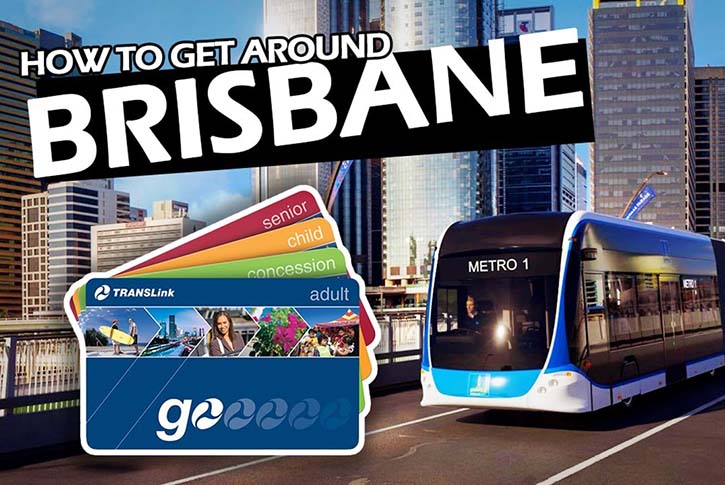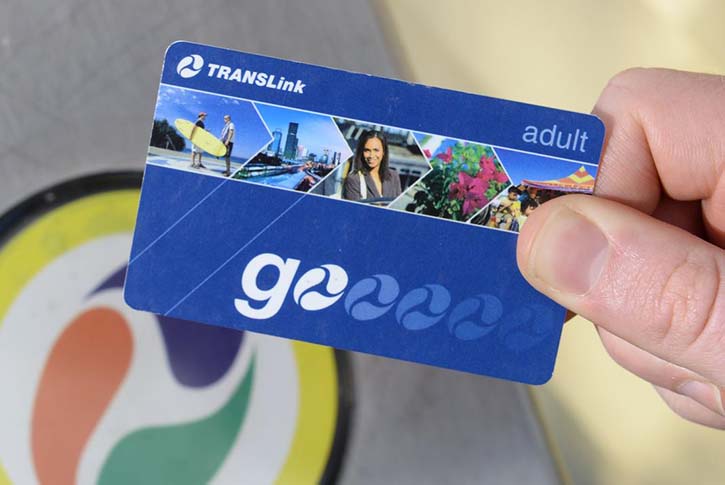Getting Around: The Complete Guide to Brisbane’s Public Transportation
- by Filip

Brisbane, the vibrant capital of Queensland, Australia, is a city known for its blend of urban sophistication and natural beauty. With a population of over 2.5 million people, it’s essential to have an efficient and accessible public transportation system to navigate this sprawling city.
This comprehensive guide aims to provide you with all the information you need to effectively use Brisbane’s public transport, whether you’re a first-time visitor or a long-term resident.
Brisbane’s Public Transportation System
Brisbane’s public transportation network is extensive and well-integrated, consisting of buses, trains, ferries, and the iconic CityCat catamarans. The system is managed by TransLink, which provides a unified ticketing system and timetable information for all services. Let’s take a closer look at each mode of transport:
Buses
Buses are the most common form of public transport in Brisbane, covering a vast network that reaches virtually every corner of the city and its suburbs. The bus system operates frequently, with major routes running every 10-15 minutes during peak times.
Trains
The train network in Brisbane, operated by Queensland Rail, consists of several lines that connect the city center with outer suburbs and regional areas. Trains are a convenient option for longer journeys and commuting to the city from the suburbs.
Ferries and CityCats
Brisbane’s river transport is a highlight of the city’s public transport system. The ferry network includes both CityFerry services and the faster CityCat catamarans, which operate along the Brisbane River. These services provide a scenic and relaxing way to travel.
Trams and Light Rail
While Brisbane does not have a tram network within the city, the nearby Gold Coast, which is part of the greater Brisbane metropolitan area, has the G:link light rail system. This can be a useful mode of transport for those visiting the Gold Coast.
Using Brisbane’s Public Transport
Go Card
The Go Card is TransLink’s smart card ticketing system, which offers a convenient and cost-effective way to travel across all public transport modes in Brisbane. Here’s how to use it:

1. Purchase a Go Card: You can buy a Go Card at various locations, including convenience stores, train stations, and online through the TransLink website. The card costs AUD 10, which includes AUD 5 for the card itself and AUD 5 as travel credit.
2. Top Up Your Card: You can add credit to your Go Card online, at train stations, or at selected retail outlets. It’s important to keep your card topped up to avoid fines or inconvenience during your travel.
3. Touch On and Touch Off: When boarding any form of public transport, you need to touch your Go Card on the card reader. Similarly, when you disembark, touch your card off the reader. This ensures that the correct fare is deducted from your card.
4. Fares and Discounts: The fare system is divided into zones, and the cost of your journey depends on the number of zones you travel through. Discounts are available for children, students, seniors, and concession card holders.
Paper Tickets
While the Go Card is the most convenient option, paper tickets are also available for single trips. These can be purchased at ticket machines and from bus drivers, but they are generally more expensive than using a Go Card.
Detailed Guide to Each Transport Mode
Buses
Routes and Services: Brisbane’s bus network covers a wide range of routes, including high-frequency “BUZ” services that run every 15 minutes or less. The bus routes are numbered, and you can find detailed route maps and timetables on the TransLink website or app.
Key Bus Routes:
– Route 199: This high-frequency route connects New Farm to West End, passing through the CBD.
– Route 222: This express service runs from Carindale to the CBD.
– Route 385: This route connects The Gap to the city, passing through Paddington and Red Hill.
Busway Network: Brisbane has dedicated busways that provide fast and efficient travel, avoiding traffic congestion. The main busways are the South East Busway, Inner Northern Busway, and the Northern Busway.
NightLink Services: For late-night travel, Brisbane offers NightLink bus services that operate on Friday and Saturday nights, providing safe transport options after midnight.
Trains
Train Lines: Brisbane’s train network consists of several lines, each serving different regions of the city and beyond. The key lines include:
– Ferny Grove Line: Connecting the city to the northern suburbs.
– Shorncliffe Line: Serving the northeastern suburbs and coastal areas.
– Cleveland Line: Running to the eastern suburbs and coastal regions.
– Ipswich/Rosewood Line: Connecting the city to the western suburbs and Ipswich.
– Springfield Line: A relatively new line serving the southwestern suburbs.
Stations and Facilities: Major train stations like Central, Roma Street, and South Brisbane offer extensive facilities, including ticket counters, restrooms, and dining options. Most suburban stations are equipped with basic amenities like seating, shelters, and ticket machines.
Airport Line: The Airtrain service connects Brisbane Airport with the city center and the Gold Coast, providing a convenient option for travelers. The journey from the airport to the city takes approximately 20 minutes.
Ferries and CityCats
CityCat Services: CityCats are modern catamarans that operate along the Brisbane River, offering a scenic and efficient way to travel. Key stops include:
– North Quay: Near the CBD and Queen Street Mall.
– South Bank: Close to cultural attractions like the Queensland Art Gallery and the Queensland Museum.
– New Farm Park: A popular recreational area with beautiful gardens.
CityFerry Services: In addition to CityCats, CityFerry services operate smaller vessels that cover shorter distances along the river. These are useful for local trips and offer a more intimate river travel experience.
Timetables and Frequencies: CityCat services run frequently, with intervals of about 15 minutes during peak times. Timetables are available on the TransLink website and app.
Trams and Light Rail (Gold Coast)
G:link Light Rail: Although not within Brisbane itself, the G:link light rail system on the Gold Coast is a valuable transport option for those exploring the greater Brisbane area. The G:link connects key locations on the Gold Coast, including Surfers Paradise, Broadbeach, and Southport.
Tickets and Fares: The Go Card can also be used on the G:link, making it easy to switch between different transport modes without the need for multiple tickets.
Tips for Tourists
Planning Your Journey
TransLink App: The TransLink app is an essential tool for planning your travel in Brisbane. It provides real-time information on routes, schedules, and service updates. The app also has a journey planner feature that helps you find the best routes and connections.
Google Maps: Google Maps is another excellent resource for navigating Brisbane’s public transport system. It offers detailed transit directions, including walking routes to and from stops.
Peak Times and Avoiding Crowds
Peak Hours: Brisbane’s public transport is busiest during weekday mornings (7:00-9:00 AM) and evenings (4:00-6:30 PM). If possible, plan your travel outside these hours to avoid crowded buses and trains.
Event Days: Special events, such as sports games at Suncorp Stadium or concerts at the Brisbane Entertainment Centre, can lead to increased demand on public transport. Check event schedules and plan accordingly.
Accessibility
Facilities for Disabled Travelers: Brisbane’s public transport network is generally accessible, with most buses, trains, and ferries equipped to accommodate passengers with disabilities. Key stations and stops offer additional facilities such as ramps, elevators, and accessible restrooms.
Assistance and Support: If you require assistance, TransLink offers support services for disabled travelers. Contact their customer service for specific information and arrangements.
Safety and Etiquette
Personal Safety: Brisbane is a safe city, but it’s always wise to stay aware of your surroundings, especially when traveling at night. Stick to well-lit areas and use NightLink services if you’re out late.
Transport Etiquette: When using public transport, remember to be considerate of other passengers. Offer your seat to elderly, disabled, or pregnant travelers, and avoid blocking aisles and doors.
Tourist Passes and Special Offers
Visitor Go Card: For tourists, TransLink offers a Visitor Go Card, which includes travel credit and discounts to popular attractions. This card can be a cost-effective option if you plan to use public transport frequently during your stay.
Group Discounts: If you’re traveling in a group, check for available group travel discounts. Some services offer reduced fares for multiple passengers traveling together.
Exploring Brisbane’s Top Attractions by Public Transport
South Bank Parklands
Getting There: South Bank is easily accessible by bus, train, and ferry. The South Bank train station is just a short walk from the parklands, and several bus routes stop nearby. CityCat and CityFerry services also have stops at South Bank.
Highlights: South Bank is a must-visit destination, featuring lush gardens, swimming lagoons, and cultural attractions like the Queensland Performing Arts Centre and the Queensland Art Gallery. It’s also home to numerous restaurants, cafes, and markets.
Lone Pine Koala Sanctuary
Getting There: Lone Pine Koala Sanctuary is located in Fig Tree Pocket, about 12 kilometers from the city center. You can reach it by taking the 430 bus from the city, which stops directly at the sanctuary.
Highlights: As the world’s oldest and largest koala sanctuary, Lone Pine offers visitors the chance to cuddle koalas, hand-feed kanaroos, and see a variety of native Australian wildlife.

Brisbane Botanic Gardens Mount Coot-tha
Getting There: The Botanic Gardens are accessible by the 471 bus from the city center, which stops at the gardens’ entrance. Alternatively, you can take a short taxi or rideshare trip.
Highlights: The gardens feature a stunning collection of exotic and native plants, a Japanese garden, and the Sir Thomas Brisbane Planetarium. The nearby Mount Coot-tha Lookout offers panoramic views of Brisbane.
Queensland Museum and Sciencentre
Getting There: The museum is located in South Bank, making it easily accessible by bus, train, and ferry. The Cultural Centre bus station and South Brisbane train station are both within walking distance.
Highlights: The Queensland Museum offers fascinating exhibits on natural history, cultural heritage, and science. The Sciencentre provides interactive displays that are perfect for families with children.
Food and Dining: Navigating Brisbane’s Culinary Scene by Public Transport
Eat Street Northshore
Getting There: Eat Street Northshore is a popular weekend market located in Hamilton. You can reach it by taking the CityCat to Northshore Hamilton terminal, followed by a short walk.
Highlights: The market features a vibrant atmosphere with a wide variety of food stalls offering international cuisines, live entertainment, and unique shopping experiences.
West End Markets
Getting There: The West End Markets are held every Saturday at Davies Park. You can take bus routes 199 or 192 to get there, with stops located close to the market.
Highlights: This bustling market offers fresh produce, gourmet foods, handmade crafts, and live music. It’s a great spot to enjoy a relaxed Saturday morning.
Chinatown Mall
Getting There: Chinatown Mall is located in Fortitude Valley and is accessible by train (Fortitude Valley station) or bus. Several bus routes stop near the mall.
Highlights: The mall is a hub for Asian cuisine, featuring numerous restaurants and food courts offering dishes from China, Japan, Korea, and Southeast Asia.
Day Trips from Brisbane Using Public Transport
Moreton Island
Getting There: Moreton Island can be reached by taking a ferry from the Port of Brisbane. To get to the port, you can take a train to Wynnum North station and then a short taxi or rideshare to the ferry terminal.
Highlights: Moreton Island is known for its stunning beaches, crystal-clear waters, and diverse wildlife. Activities include snorkeling, sandboarding, and dolphin feeding.
Gold Coast
Getting There: The Gold Coast is easily accessible by train from Brisbane. The Gold Coast train line runs frequently, and the journey takes about an hour. Once there, you can use the G:link light rail to explore the area.
Highlights: The Gold Coast is famous for its beautiful beaches, theme parks, and vibrant nightlife. Key attractions include Surfers Paradise, Sea World, and Dreamworld.
Sunshine Coast
Getting There: The Sunshine Coast can be reached by taking a train to Landsborough station, followed by a bus or taxi to your specific destination. The train journey takes about an hour and a half.
Highlights: The Sunshine Coast offers stunning beaches, lush hinterlands, and charming towns. Popular spots include Noosa, Mooloolaba, and the Glass House Mountains.
Safety Tips and Practical Advice
Health and Safety
COVID-19 Precautions: Follow local health guidelines, including wearing masks on public transport if required, practicing good hand hygiene, and maintaining social distancing where possible.
Personal Safety: Keep your belongings secure, especially in crowded areas. Be cautious when traveling at night, and use well-lit, busy routes.
Weather Considerations
Hot Weather: Brisbane can get very hot, especially in summer. Stay hydrated, wear sunscreen, and seek shade when necessary. Public transport vehicles are air-conditioned, providing relief from the heat.
Rainy Season: The city experiences heavy rainfall during the summer months. Carry an umbrella or raincoat and be prepared for sudden downpours.
Budgeting for Transport
Fare Caps: TransLink offers daily and weekly fare caps, which limit the maximum amount you spend on travel within a specific period. This can help you manage your budget effectively.
Off-Peak Discounts: Traveling during off-peak times can save you money, as fares are cheaper outside peak hours. Check the TransLink website for specific off-peak times and fare details.
Brisbane’s public transportation system is a reliable and efficient way to explore the city and its surroundings. Whether you’re commuting to work, visiting top attractions, or embarking on a day trip, the combination of buses, trains, ferries, and CityCats offers comprehensive coverage and convenience.
Brisbane, the vibrant capital of Queensland, Australia, is a city known for its blend of urban sophistication and natural beauty. With a population of over 2.5 million people, it’s essential to have an efficient and accessible public transportation system to navigate this sprawling city. This comprehensive guide aims to provide you with all the information…
Recent Posts
- Darwin Airport Duty-Free Shopping Guide: The Final Shopping Opportunity Before Departure
- Darwin’s Best Oceanview Stay: A Romantic Paradise Beneath the Sunset Skies
- Darwin’s Seafood Feast: An Epicurean Trail Through the Top Sea-to-Plate Restaurants
- Tropical Natural Wonders: Exploring the National Parks Around Darwin
- Darwin Harbour Odyssey: Where History, Scenery, and Vessels Converge